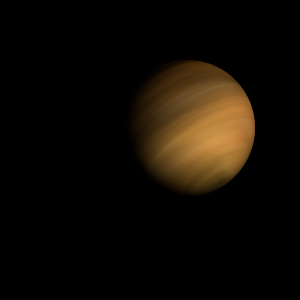|
|
Space Astro
|
Info for exoplanet "Bute"
| Scientific (actual) data |
|---|
| Planet | HD 148284 b |
| Planet status | Confirmed |
| Mass sini | 34.5 |
| Radius | 1.067 |
| Orbital period | 339.302 |
| Semi major axis | 0.974 |
| Orbit eccentricity | 0.38967 |
| Discovered | 2018 |
| Updated | 2018-12-30 |
| Omega | 35.53 |
| Tperi | 2455790 |
| K | 1022 |
| Publication | Published in a refereed paper |
| Detection type | Radial Velocity |
| Mass detection type | Radial Velocity |
| Radius detection type | Theoretical |
| Star name | HD 148284 |
| Right ascension | 246.45° |
| Declination | 30.27° |
| Mag v | 9.01 |
| Star distance | 94 |
| Star mass | 1.07 |
| Star radius | 1.48 |
| Star sp type | K0 |
| Star age | 8.7 |
| Star temperature | 5572 |
| Wikipedia article | HD 148284 b |
Back
| |
| Fictional info (?) |
|---|
| Suggested name | Bute |
| Planet type | Cold planet |
| It has the longest rotation period (445 days) of any planet in its solar system and rotates in the opposite direction to most other planets.
Bute is the only habitable planet orbiting HD 148284 and one of the oldest in its solar system. The planet is named after the deity Bute, the creator of the sky.
It may have had neon oceans in the past, but these would have vaporized as the temperature rose due to a runaway greenhouse effect. Bute's surface is a dry desertscape interspersed with slab-like rocks and is periodically resurfaced by volcanism. |
| Atmosphere | Formaldehyde | 84% |
| Oxygen | 14% |
| Neon | 1.7% |
| Ammonium hydrosulfide (NH4SH) | 0.0024% |
| Atmospheric pressure | 10 bar |
 |
| No known satellites |
| Google search for Bute |
|
Website by Joachim Michaelis
|
|
|
|